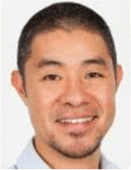Solar driven produced water treatment for beneficial uses
Ralph Gunness A D , Hensley Wee B , Ronald Lee B , Luong N. Nguyen C and Long D. Nghiem CA Bridgeport Energy Limited, Level 7, 111 Pacific Highway, North Sydney, NSW 2060, Australia.
B JWA Oilfield Supplies Pty Ltd, 35 Griffin Crescent, Brendale, Qld 4500, Australia.
C Centre for Technology in Water and Wastewater, University of Technology Sydney, PO Box 123, Broadway, NSW 2007, Australia.
D Corresponding author. Email: RGunness@bridgeport.net.au
The APPEA Journal 61(1) 25-32 https://doi.org/10.1071/AJ20089
Submitted: 21 December 2020 Accepted: 26 February 2021 Published: 2 July 2021
Abstract
This study evaluates the feasibility of an emerging technology – a concentrated solar multi-effect distiller (CSMED) – to supply high quality water for beneficial use at Eromanga, which is located in a remote and dry region of Australia. Produced water from the Kenmore oil field is the only reliable water source at Eromanga and has been approved for livestock watering. The process utilises concentrated solar technology to drive a multi-effect distiller, making the process ideal for the Australian outback. Historical water parameters of the produced water were assessed against the water guidelines for irrigation, livestock watering, municipal and potable use. The proposed treatment will further improve key water quality parameters to exceed guideline requirements for unrestricted water uses mentioned above. The CSMED produces a high-quality distillate (i.e. treated water) free of all mineral salts that can be mixed with the produced water to increase the final product water volume. An Excel based model was developed to determine suitable blending ratios while maintaining the water quality for each beneficial use. For production of livestock watering and potable use, a blending ratio (of at least 19% v/v) between the CSMED distillate and produced water can be applied, significantly increasing the final water volume. The Excel based model could also indicate chemical addition for adjustment of sodium absorption ratio in the case of irrigation application. The brine from the CSMED can potentially be used to prepare drilling mud for oil field operation. An on-site performance study of the CSMED system has been planned to validate these results.
Keywords: concentrated solar multi-effect distiller, oil operations, produced water, water quality guideline, beneficial water uses, Eromanga Basin, Kenmore oil field.

Ralph Gunness is the Environmental and Compliance Manager for the Bridgeport Energy group of companies, and his role is to implement the Environmental and Health and Safety requirements for their operations. This role includes management of the treatment of produced water and its beneficial uses within the community. Ralph has degrees in Business Management, Environmental Studies, Training and Agricultural Science. Ralph has published and/or presented 30 papers on coal seam gas (CSG) water, the uses of CSG water environment and associated topics. He pioneered the application of Reverse Osmosis CSG water treatment and the beneficial use of CSG water for agribusiness. In 2007, Ralph and his team received several national and international awards for innovative environmental management associated with water processing, energy conservation and beneficial use. |

Ronald Lee is Environmental Projects Lead at JWA Oilfield Supplies. He holds an Honours degree in Business (Finance) and a Masters in Environment and Sustainability, bringing knowledge and experience from his time in the resources, telecommunications, sustainability and government sectors. He has advised clients on maximising financial and environmental outcomes while minimising project risk for large capital projects. Previously, he was the Queensland State Manager for a consultancy, building strategic partnerships, managing sustainability projects and leading business development. Currently, Ronald is playing a key role in sourcing funding and supporting commercialisation efforts of JWA’s novel Concentrated Solar Multi-Effects Distillation technology. |

Hensley Wee is the Director of Business Development at JWA Oilfield Supplies, leading product sales strategy, implementation and execution. Hensley is experienced in closing direct sales and developing strategic partners within the resource industry. Hensley has a proven track record in commercialising novel technology with beneficial environmental impacts into major energy projects in India, Papua New Guinea, Kazakhstan and Australia over his 20-year career. |

Luong Nguyen is a Research Fellow at the Center for Technology in Water and Wastewater. He has 5 years of experience in water industry and research and development environments with major sector clients (Sydney Water, GHD). He received Masters (2012) and PhD degrees (2015) in Environmental Engineering at the University of Wollongong. His career aims are to produce clean and affordable water for beneficial reuses from non-conventional water sources such as saline water, brackish water, and wastewater. He has led highly successful projects, such as membrane filtration for potable water production and membrane distillation for brine treatments. |

Long Nghiem is a Professor and the Director of the Centre for Technology in Water and Wastewater. His current research centres around the water–energy–food nexus, with a focus on energy efficient water treatment and resource recovery. He has led several large-scale research projects to develop and implement the extraction of clean water from alternative sources, including CSG produced water for beneficial uses. Long has worked at Colorado School of Mines for 6 months as a Visiting Professor (in 2009) and the Technical University of Munich for 3 months as an August-Wilhelm Scheer Visiting Professor (in 2016). |
References
ANZECC. (2000). Australian and New Zealand Guidelines for Fresh and Marine Water Quality. Commonwealth of Australia, Canberra.Blair, D., Alexander, D. T., Couperthwaite, S. J., Darestani, M., and Millar, G. J. (2017). Enhanced water recovery in the coal seam gas industry using a dual reverse osmosis system. Environmental Science: Water Research and Technology 3, 278–292.
| Enhanced water recovery in the coal seam gas industry using a dual reverse osmosis system.Crossref | GoogleScholarGoogle Scholar |
Millar, G. J., Couperthwaite, S. J., and Moodliar, C. D. (2016). Strategies for the management and treatment of coal seam gas associated water. Renewable and Sustainable Energy Reviews 57, 669–691.
| Strategies for the management and treatment of coal seam gas associated water.Crossref | GoogleScholarGoogle Scholar |
Nghiem, L. D., Ren, T., Aziz, N., Porter, I., and Regmi, G. (2011). Treatment of coal seam gas produced water for beneficial use in Australia: A review of best practices. Desalination and Water Treatment 32, 316–323.
| Treatment of coal seam gas produced water for beneficial use in Australia: A review of best practices.Crossref | GoogleScholarGoogle Scholar |
NHMRC and NRMMC. (2019). Australian Drinking Water Guidelines Paper 6 National Water Quality Management Strategy. National Health and Medical Research Council, National Resource Management Ministerial Council, Commonwealth of Australia, Canberra.
Skinner, J. E., Altmann, M. J., and Wadham, T. H. (2006). More wells, more oil: A case study of reserves growth in the Kenmore field. The APPEA Journal 46, 35–46.
| More wells, more oil: A case study of reserves growth in the Kenmore field.Crossref | GoogleScholarGoogle Scholar |
Tao, P., Ni, G., Song, C., Shang, W., Wu, J., Zhu, J., Chen, G., and Deng, T. (2018). Solar-driven interfacial evaporation. Nature Energy 3, 1031–1041.
| Solar-driven interfacial evaporation.Crossref | GoogleScholarGoogle Scholar |
Watts, K. J. (1987). The Hutton Sandstone-Birkhead formation transition, ATP 269P(1), Eromanga Basin. The APPEA Journal 27, 215–229.
| The Hutton Sandstone-Birkhead formation transition, ATP 269P(1), Eromanga Basin.Crossref | GoogleScholarGoogle Scholar |
Yao, R., Jiang, G., Li, W., Deng, T., and Zhang, H. (2014). Effect of water-based drilling fluid components on filter cake structure. Powder Technology 262, 51–61.
| Effect of water-based drilling fluid components on filter cake structure.Crossref | GoogleScholarGoogle Scholar |


